The HTC One M9 Review: Part 1
by Joshua Ho on March 22, 2015 7:00 PM EST- Posted in
- Smartphones
- HTC
- Qualcomm
- Mobile
- Snapdragon 810
- One M9
Software: Sense 7
On the software side of things, HTC has refreshed Sense for its latest incarnation, but the changes are relatively few and we’ve generally covered most of them in the launch article, but it’s still well worth going over again. With this new generation of Sense, HTC seems to be more focused upon refining Sense rather than a major redesign. To this end, they’ve introduced a few new key features, but everything else has had only a few minor changes in terms of aesthetics in order to clean things up.
The first major feature that HTC wants to highlight is Sense Home, which is effectively a system that relies on location and time of day to present applications and to avoid cluttering home screens with a sea of icons, as HTC puts it. To this end, I found that the system actually works pretty well, but I’m not really sure if it’s all that valuable as I tend to use a small set of the same applications regardless of location and the time of day. I think the harder problem that HTC needed to solve to really make this a compelling experience is to try and predict cases where applications aren’t on a homescreen but are likely to be used in the near future. However, the problem here is that Google Now basically solves that problem as well. As a result, power users aren’t really going to be very interested in using this widget. There are also some issues with how the app requires a “recommended apps” folder, which ends up rather intrusive in practice feels closer to sponsored placement than anything else.
The other features HTC highlighted as new additions were additional personalization and lock screen recommendations. In general, these are definitely helpful additions to the UI. The personalization allowed on the on screen buttons makes it possible to do things like enable and disable rotation, hide the on screen buttons, put the phone to sleep, open the notification drawer, or open the quick settings drawer. The ability to customize and rearrange these navigation buttons is definitely a neat feature, and it’s good to see that HTC is taking advantage of the on screen buttons even if it isn’t a novel idea.
Themes were the other aspect that was meant to make Sense 7 more personal for the end user, and this is probably the single biggest change to Sense 7 when compared against the previous version. HTC has really made it easy to customize themes with a single tap, by taking a wallpaper or any photo and automatically generating icons, backgrounds, and color schemes based upon the photo given. In addition, it’s possible to download themes from HTC’s theme application, and it’s also possible to make a custom theme online for extra control. In practice, after testing out the theming system, I’m not really sure that the default system is really all that useful. It does work as promised, but the results aren’t really going to fit with anything that follows Holo or Material Design guidelines. I definitely think that someone that makes a determined effort could make a compelling theme, but this is by no means guaranteed.
The final change is to the lock screen, which introduces food and drink recommendations on the lock screen. Once again, there’s a sense that this isn’t done purely for the sake of user experience, but in my experience this aspect of Sense is at least somewhat helpful, even if most suggestions end up being ignored. In practice, I’m not sure that a lot of users will find this feature all that helpful, and there is some level of concern that such location polling could reduce battery life, but it’s hard to notice such impacts without extensive usage and comparison.
Outside of these changes, Sense 7 is mostly composed of cosmetic changes. These do help to make the UI look a bit more modern, but HTC definitely needs to do a redesign to make everything fit in with material design. Unfortunately, it’s rather hard to show this with pictures as so much of Material Design is focused on animations which help to introduce a sense a continuity. While Lollipop’s animations help to make it feel like everything is grounded in a certain way, Sense 7 seems to have some rather jarring animations, such as returning to home screens without any real transition at all. There are cases where HTC does get this right, like the quick settings menu, but in general this seems to be a weakness of Sense 7.
Overall, Sense 7 remains a relatively strong UI, even if the additions over Sense 6 aren’t particularly compelling. HTC has managed to do a good job here, but future versions definitely need to focus more strongly on keeping up with Google’s design guidelines. There also seems to be some minor frame drops in rare cases in the UI, which seems to suggest either that Sense 7 isn’t as optimized as Sense 6 or that the Snapdragon 810 isn’t able to ramp up as quickly to respond to demand as previous SoCs.


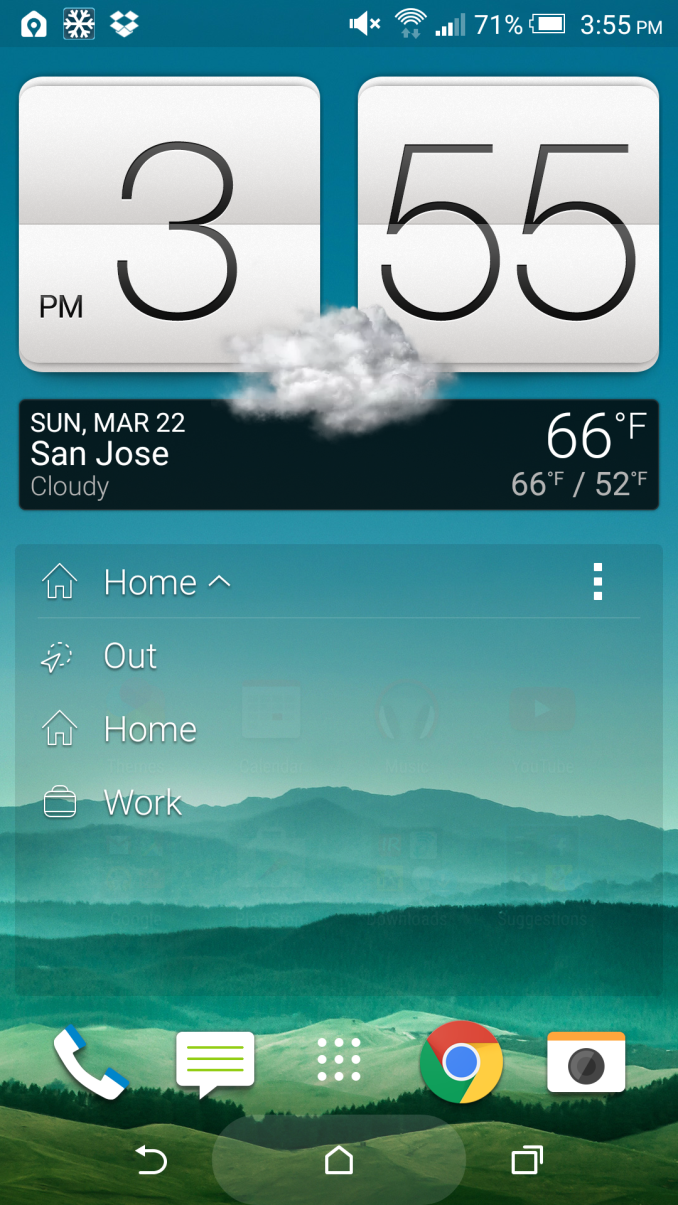
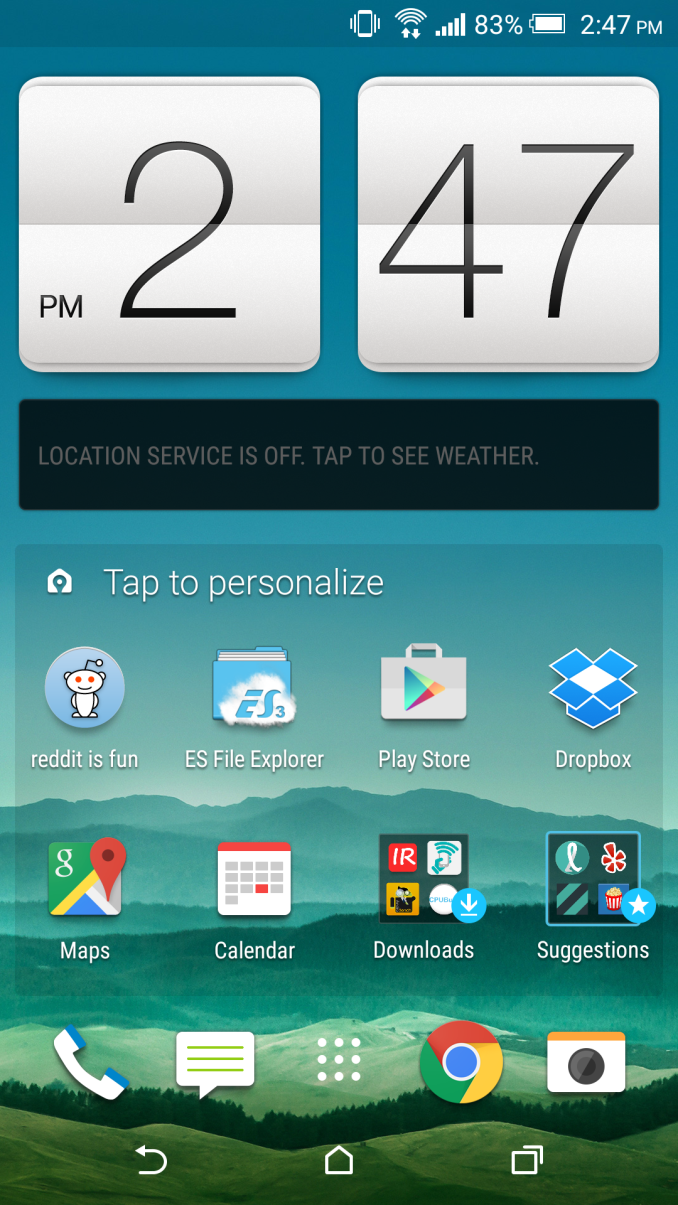
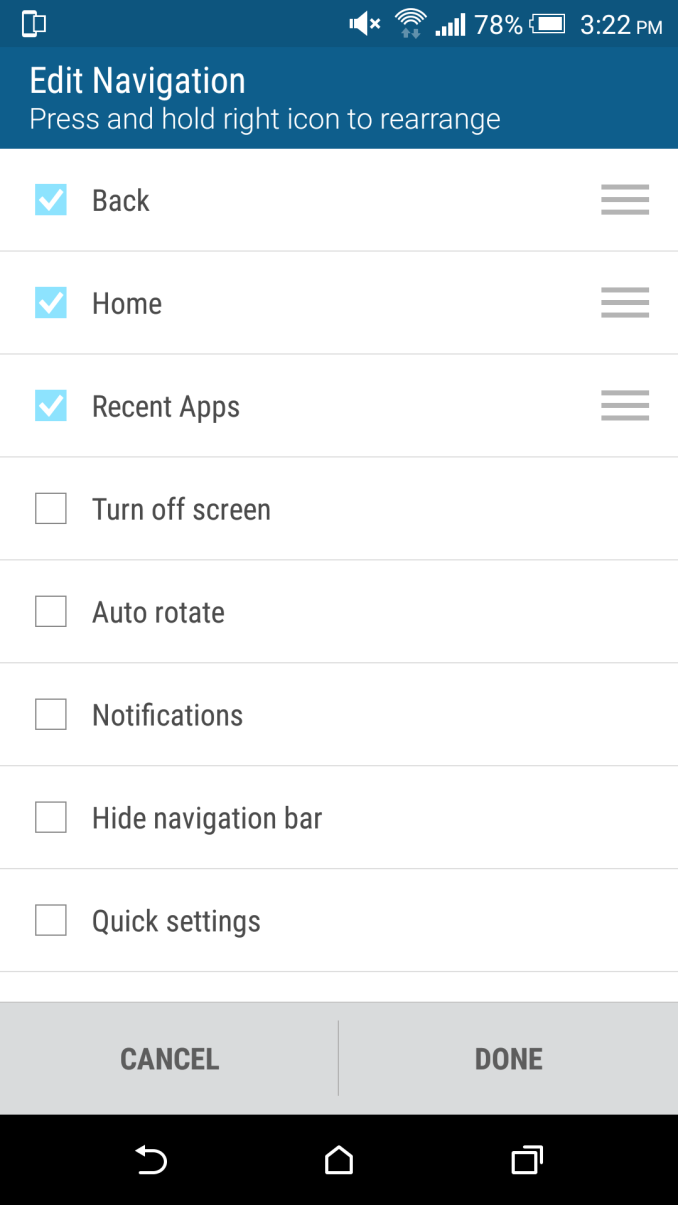
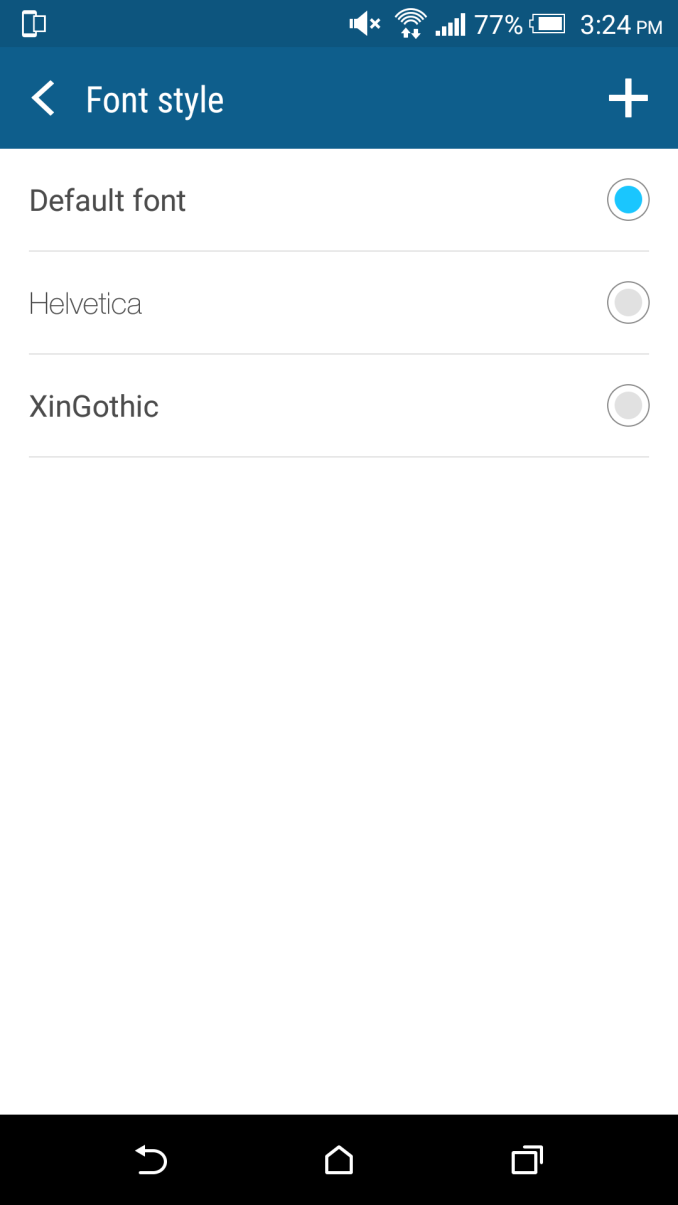
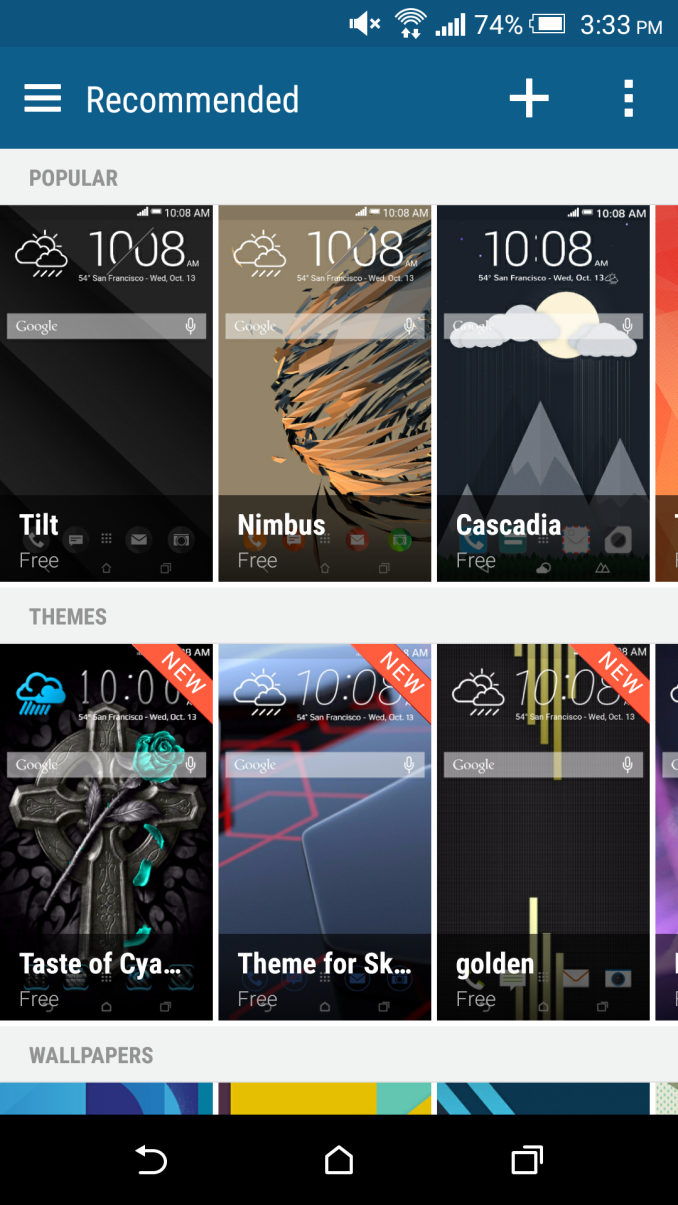
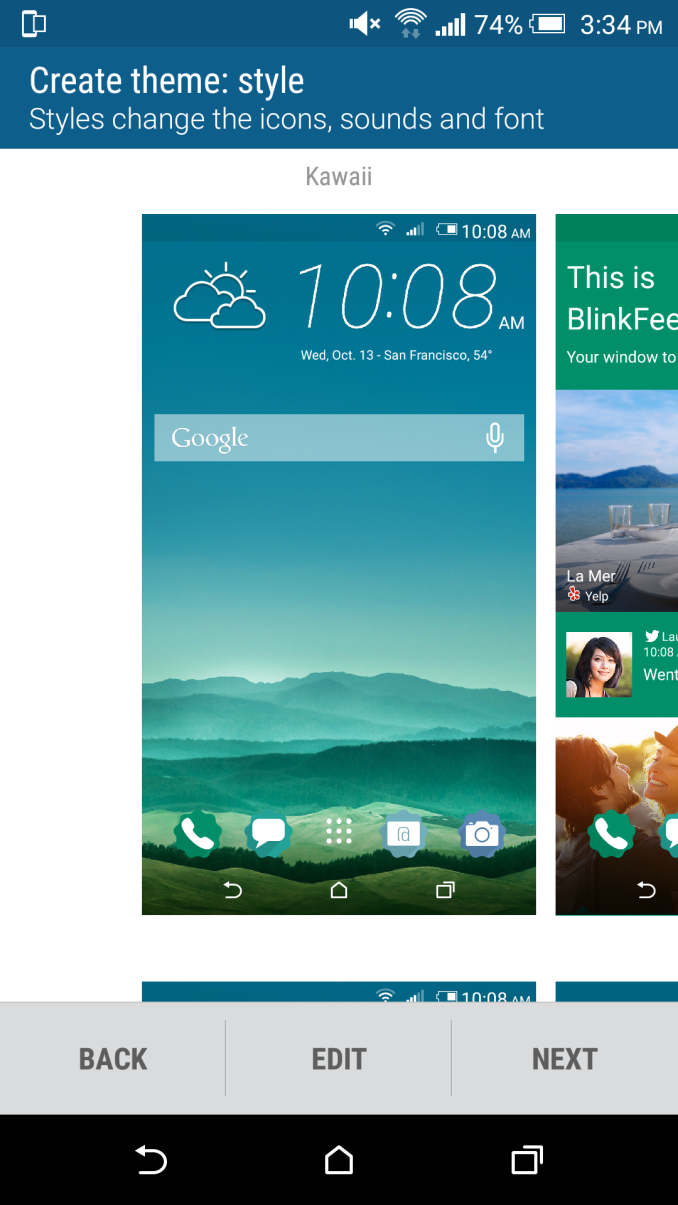
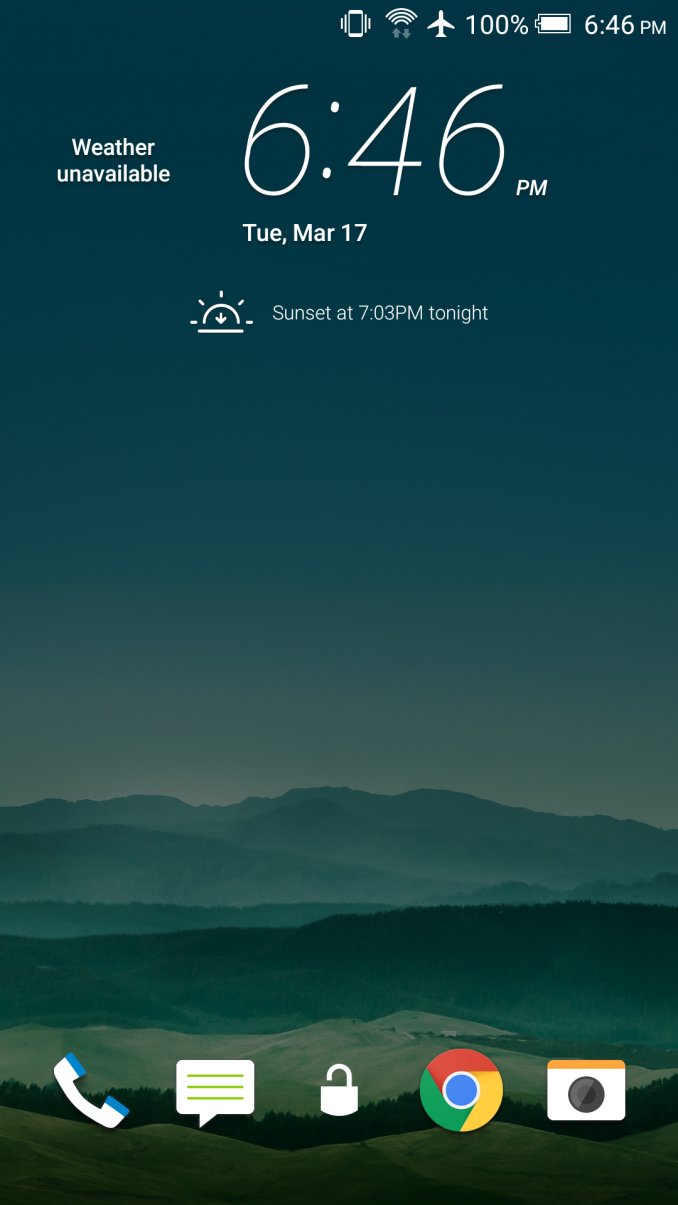
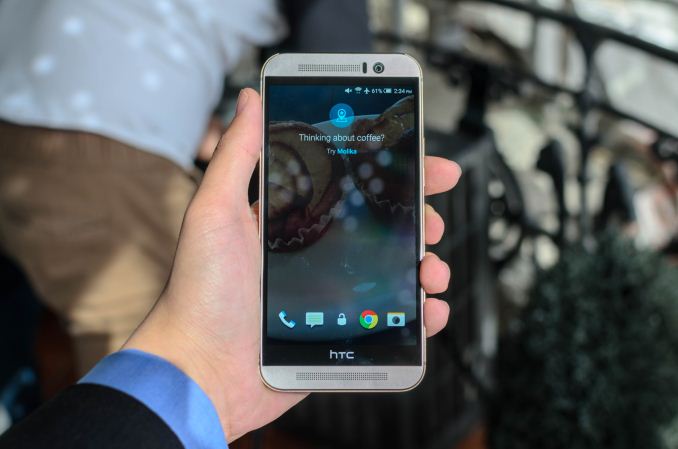
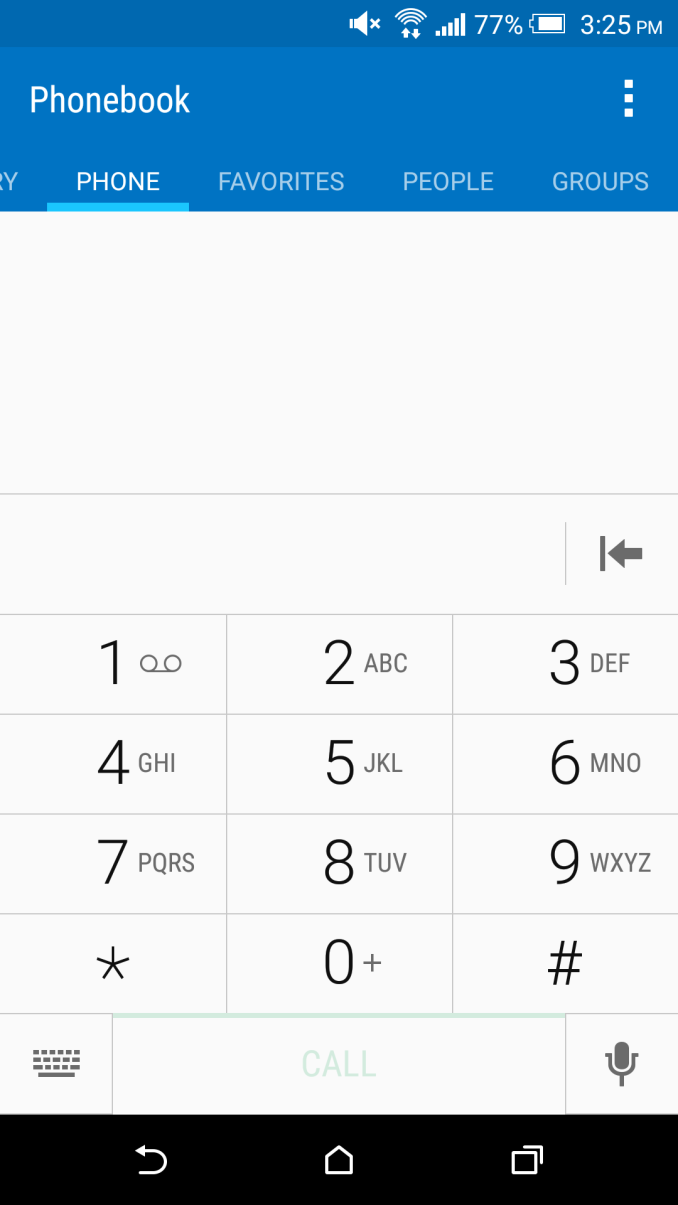
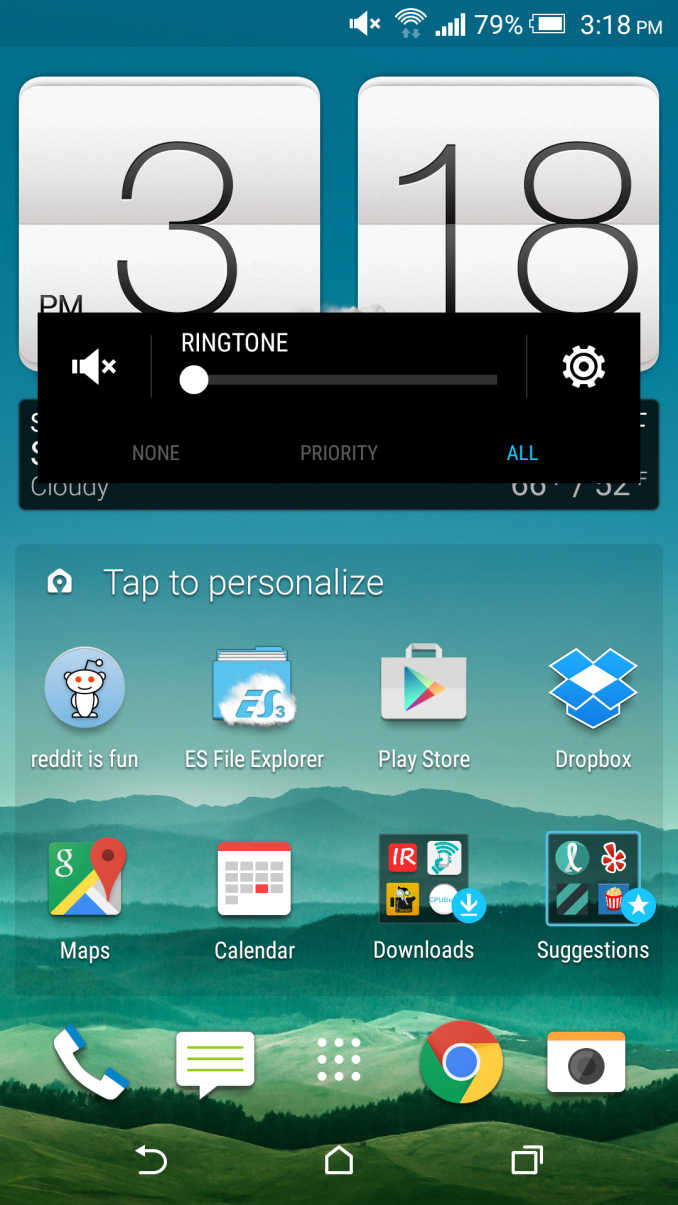
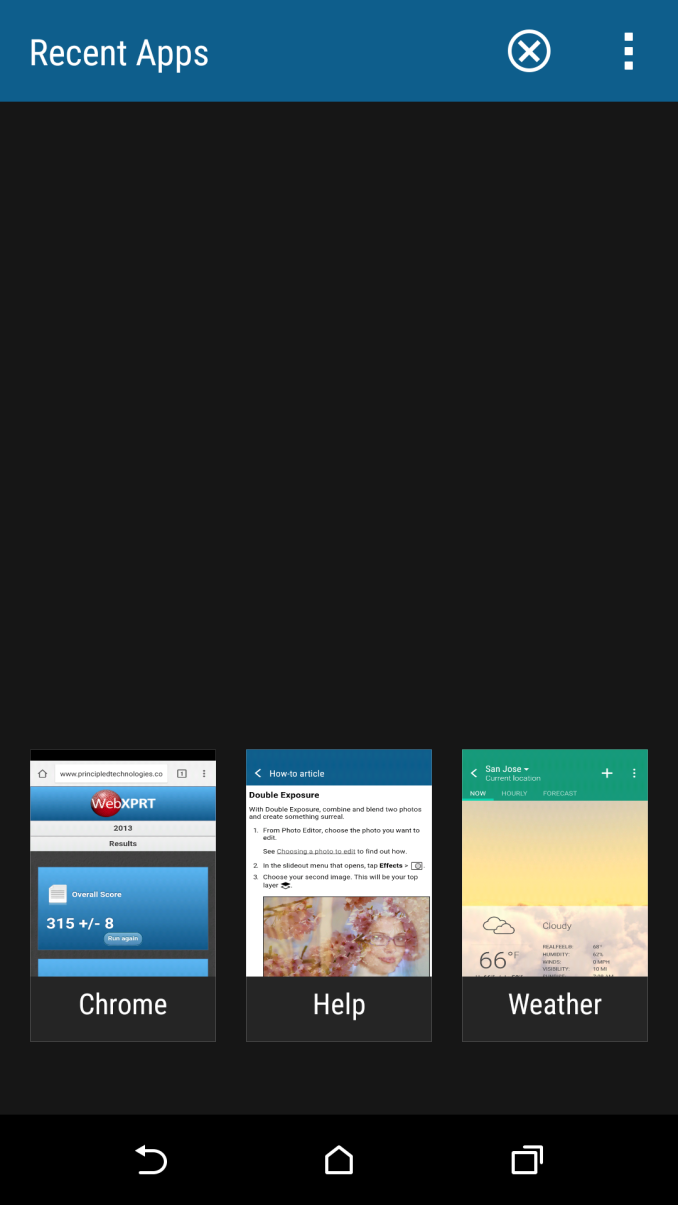
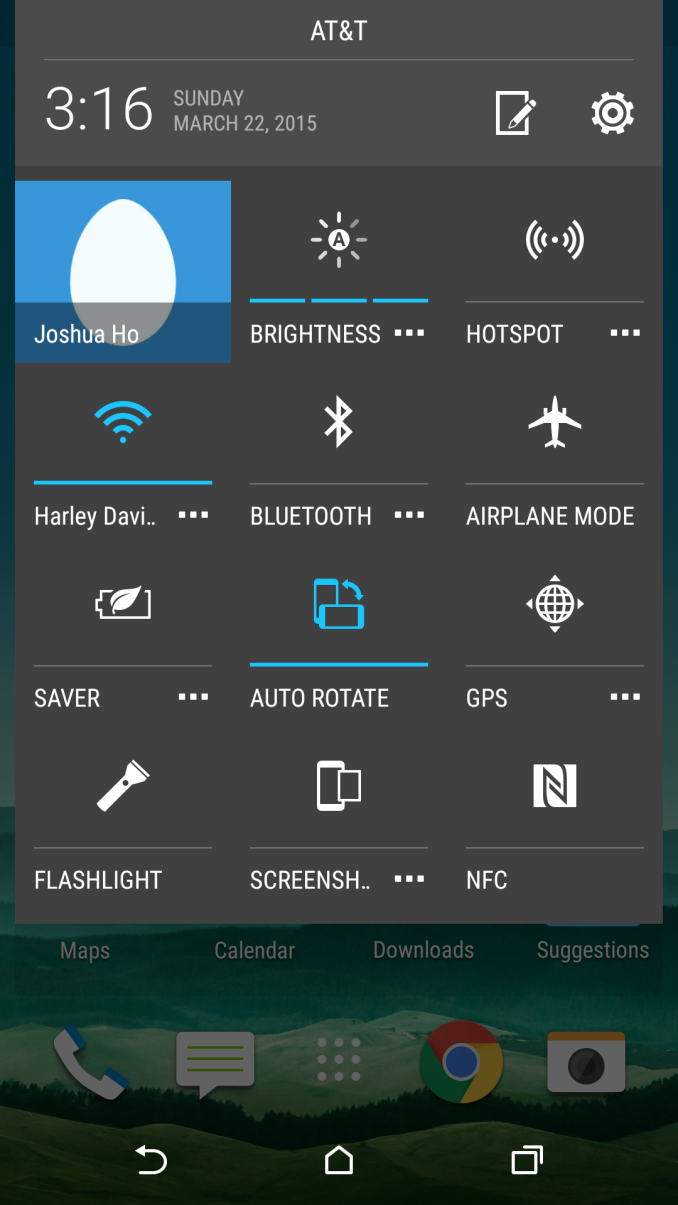








132 Comments
View All Comments
Midwayman - Tuesday, March 24, 2015 - link
With android it almost always seems to be misbehaving apps. Its hard to compare unless you keep the OS stock. I've spent a fair amount of time chasing down wakelocks.Notmyusualid - Sunday, March 22, 2015 - link
My gf noticed too.She went to buy a new Windows phone after she 'fell' into the pool this weekend, drowining the Nokia 820 I bought her. Ok, I dunked her...
But alas the top models were out of stock at the biggest shopping center available. Eventually she left with a Galaxy A7 (Octa core, 5.5" 1080, fast ram, dual sim) and whilst I'm impressed, she, not too much. She really wanted a Windows Phone it seems.
zodiacfml - Monday, March 23, 2015 - link
I feel bad. They've focused too much on the physical materials of the phone, hurting the other parts.They could have also went for a larger display at the same resolution to increase battery size and minimize bezels.
This will be competing with the S6 which is the phone to get in 2015 because of its very nice camera.
mchart - Monday, March 23, 2015 - link
A larger display is not what it needs. What it needs is the same display but in a chassis that is smaller and doesn't have all that useless area needlessly increasing the size of the phone.Impulses - Monday, March 23, 2015 - link
Pretty underwhelming, I'm starting to wonder whether I'll hold on to my current phone even longer than 2 years, it's the first one I've had for more than a year as it is. Z3c was the only thing that tempted me last year...mchart - Monday, March 23, 2015 - link
IMO the Z3C is the best phone in the market. It's just a shame it's been largely ignored.I'm an iPhone fan and the Z3C is the first Android running hardware that hasn't led to disappoint for me. Great battery life, great build quality, feels nice in normal usage, has top end hardware packed in, and is running pretty much vanilla Android.
It can be had for a really great price now too. Low $400s, and you can get it in that same price range direct from Sony with a 1 year warranty if you make a free student account to receive 10% off through them.
It's really the best phone if you can't stand/deal with these larger monsters that are frankly a pain to use on a day to day basis for simple things like phone calls.
sonny73n - Monday, March 23, 2015 - link
The Z3C has a few problems. It would be the best phone in the market if it had better display and protective glass. I wish my Z3C has the same display quality as the M7 and Gorilla 3 front and back glass.mchart - Monday, March 23, 2015 - link
The z3 has gorilla glass front and back. The display is high quality as well. It's just not 1080p. The ppi is still high enough for that size though.V900 - Monday, March 23, 2015 - link
Yeah, 1080p is really overkill for a phone right around 4 inches. I honestly couldn't tell the difference between 1080p 720p and the 1136*640 on a 4 inch screen in regular usage. As long as it's above 300 PPI few people would be able to tell...Impulses - Monday, March 23, 2015 - link
If I was buying a phone today I'd probably pick it over my Nexus 5 (are they even still selling the N5?), tho I'd have to switch carriers for it... I'm satisfied with Sprint in my area for now and that's one of the reasons I've kept the N5.A Z3c with Qi wireless charging and OIS would be the perfect compact Android phone IMO. Hopefully Sony doesn't abandon smaller devices (or the smartphone market altogether) any time soon.
Whatever they follow up the Z3c might just be the replacement for the N5 I've had since Nov 2013... I had three HTC phones before the, pretty happy with them, the One just hasn't done it for me.
Ergonomically it's always felt odd and it seems they're treading water in most other senses (no pun intended).